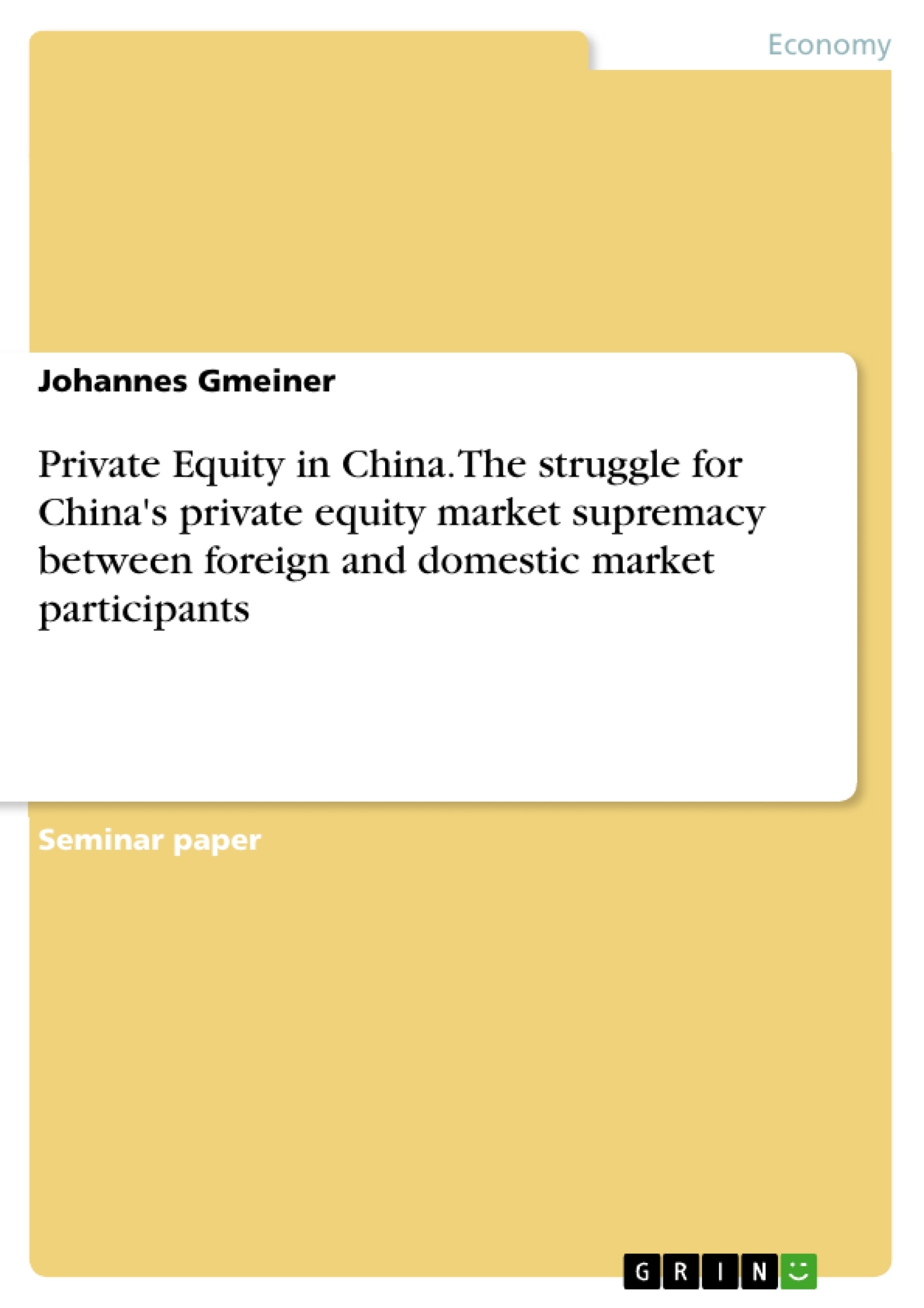2014 has been a year for the record books concerning private equity. Global investment exits through initial public offerings accumulated two trillion US dollar and about 500 billion US dollar have been collected in private equity funds for future investments.
These impressive numbers show how important private equity has become in the international financial sector and China has evolved to one of the biggest private equity markets in the world. This raises the question of who is in power in the Chinese market? Giants like Goldman Sachs, Blackstone or Carlyle dominate the international market. So how are the domestic Chinese private equity firms doing? When China first heard of private equity in the early-1990s, it was already one of the biggest investment markets in the West, mainly in America. Hence, American companies had nearly no competitors in China and made fortunes in this recently opened market. Nevertheless, domestic firms developed quickly and challenged foreign companies to a duel.
This paper will be divided into two parts, firstly it will show the development of Chinese and foreign private equity companies and their shares on the Chinese market. The second part then will try to give an impression on possible reasons for the mentioned development. There won’t be any further explanations about private equity given in this paper, only if they are needed for deeper understanding of the context. However specific knowledge about private equity will not be needed since it won’t discuss specific features of it in detail. The aim of this paper is to answer the questions about how the market developed and the possible reasons for this.
Index
1 Introduction
2 Initiation of China’s private equity market and development until 2005
2.1 Development between 2004 and 2014
2.2 Fundraising by FOPE and COPE
2.3 Completed investments by COPE and FOPE
2.4 Short summary of private equity market development
3 Possible reasons for the declining market share of FOPE
3.1 Legal framework and regulations
3.1.1 Government agencies relevant for private equity
3.1.2 Red Chip structure or Round Trip investment
3.1.3 Other important regulations concerning FOPE and COPE
3.1.4 China’s stock market and IPO
3.2 Princeling-returnee constellation
3.3 Other influences
4 Conclusion
5 Bibliography
6 Appendix
6.1 Appendix A
6.1.1 Appendix A
6.1.2 Appendix A
6.2 Appendix B
6.2.1 Appendix B
6.2.2 Appendix B
6.3 Appendix C
- Arbeit zitieren
- Johannes Gmeiner (Autor:in), 2016, Private Equity in China. The struggle for China's private equity market supremacy between foreign and domestic market participants, München, GRIN Verlag, https://www.grin.com/document/438753
-

-

-

-
Laden Sie Ihre eigenen Arbeiten hoch! Geld verdienen und iPhone X gewinnen. -

-
Laden Sie Ihre eigenen Arbeiten hoch! Geld verdienen und iPhone X gewinnen. -

-
Laden Sie Ihre eigenen Arbeiten hoch! Geld verdienen und iPhone X gewinnen. -

-
Laden Sie Ihre eigenen Arbeiten hoch! Geld verdienen und iPhone X gewinnen. -

-
Laden Sie Ihre eigenen Arbeiten hoch! Geld verdienen und iPhone X gewinnen. -

-
Laden Sie Ihre eigenen Arbeiten hoch! Geld verdienen und iPhone X gewinnen. -

-
Laden Sie Ihre eigenen Arbeiten hoch! Geld verdienen und iPhone X gewinnen.

